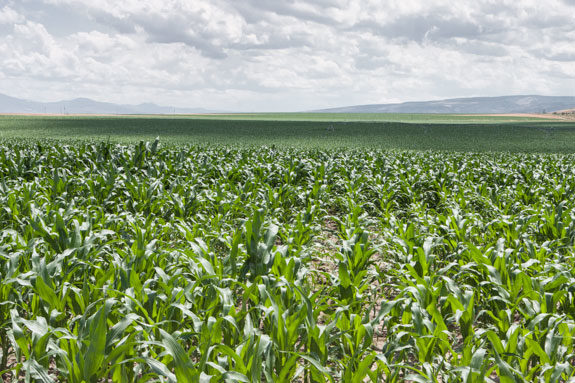The major reasons: reduced pest and disease pressure, better soil structure that enhances root growth and water infiltration and an altered soil microbial community, says Jeff Coulter, a corn agronomist with University of Minnesota Extension.
Alfalfa also reduces nitrogen fertilizer needs in corn. Nitrogen fertilizer for first-year corn following a good alfalfa crop can often be reduced by up to 100 percent, and by about 50 percent for second-year corn.
The nitrogen passed on to the corn is largely due to additions of nitrogen-rich inputs from alfalfa to soil organic matter.
These include alfalfa leaves and stems lost during harvest, alfalfa stand losses over time, turnover of thin alfalfa roots and substances that exude out of alfalfa roots.
They mineralize rapidly after alfalfa is terminated and release nitrogen for at least two years.
With funding from the Minnesota Corn Growers Association, the Minnesota Agricultural Fertilizer Research and Education Council, and the Minnesota Agricultural Water Resource Center, Coulter and co-workers recently completed on-farm research that confirms the nitrogen "credits" from alfalfa to corn.
From 2009 to 2011, research on first-year nitrogen credits was conducted on 31 farms across Minnesota and Wisconsin with medium-textured to fine-textured soils. Only three of the 31 farms had increases in grain yield from adding nitrogen fertilizer to first-year corn after alfalfa.
The three responsive farms had fine-textured soils and excessive early-season precipitation, which likely slowed mineralization. It was also found that nitrogen fertilizer rates could be reduced if the nitrogen was sidedressed rather than applied near planting.
In 2011 and 2012, research on second-year nitrogen credits was conducted on 11 farms in Minnesota with medium-textured to fine-textured soils. Surprisingly, four of 11 farms required no nitrogen fertilizer to maximize grain and silage yield.
The economically optimum nitrogen rate varied among the seven responsive farms but was often at least half as large as that for continuous corn. As in first-year corn, sidedress applications of nitrogen allowed growers to reduce fertilizer rates without sacrificing yield.
"Farmers are our active research partners and help us perform the field operations," Coulter says. To help spread the word on the results, nine on-farm field days were held over the last three years and were attended growers and farm advisors managing over one million acres of farmland.
More details on University of Minnesota Extension corn production are available here. FG
—From University of Minnesota Extension Ag News Wire
PHOTO
TOP: Young corn silage field. Staff photo.











